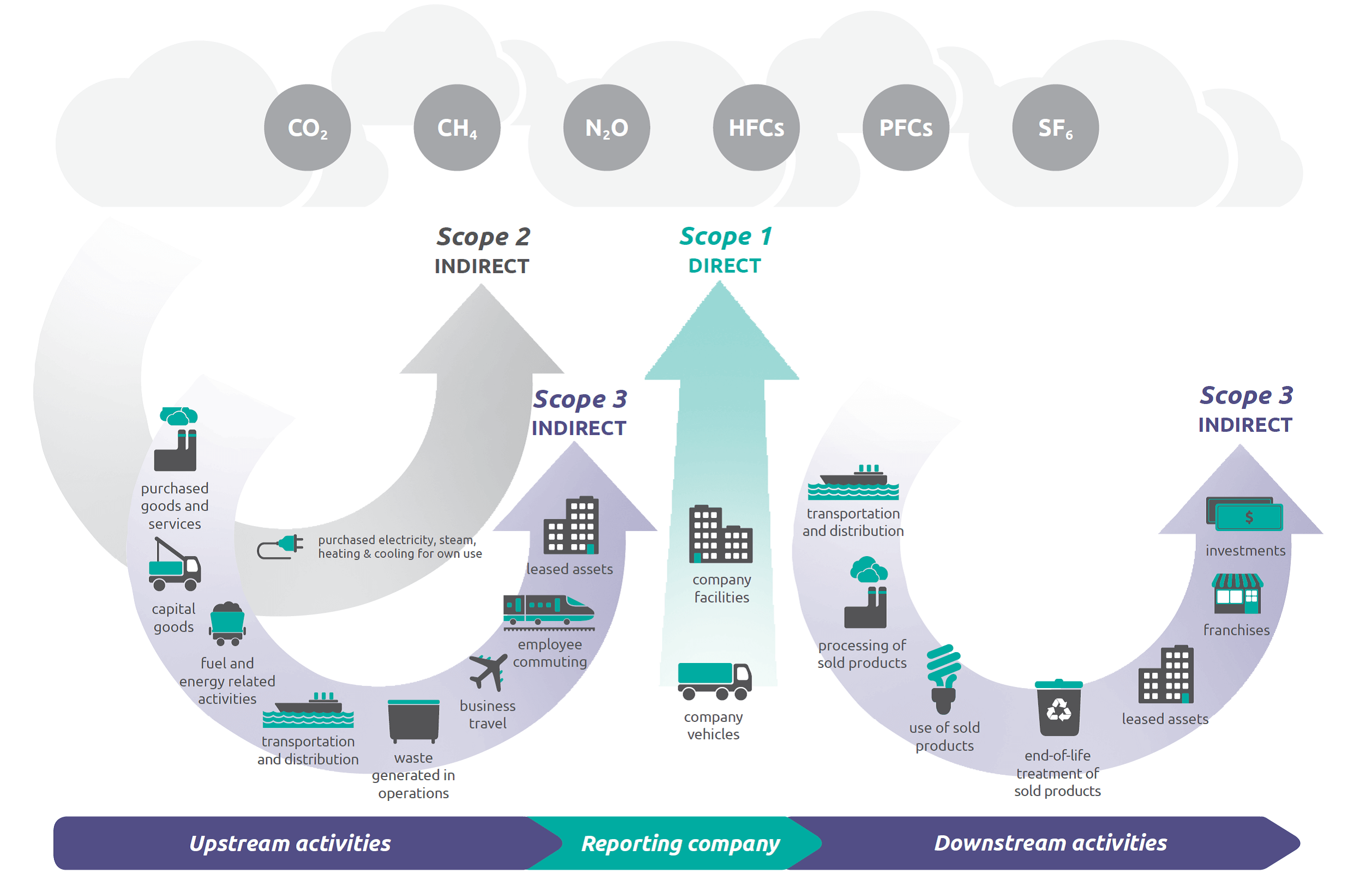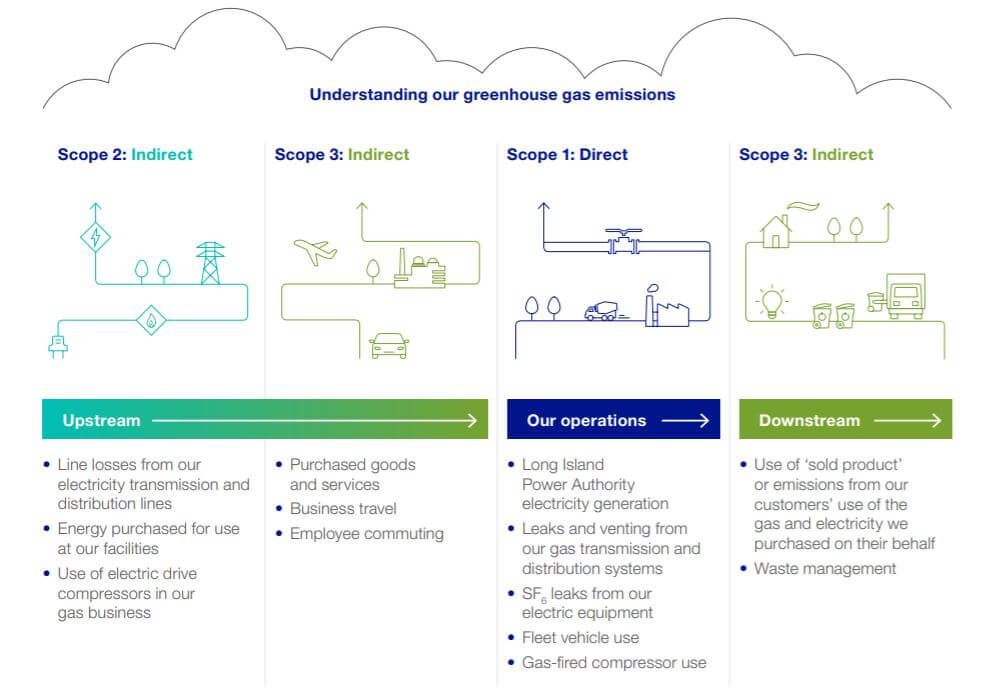What Are Scope 1, 2, and 3 Emissions?
Today, it’s common for businesses of all sizes to report data on their greenhouse gas (GHG) emissions. Many countries require companies to disclose their GHG emissions. In addition, many companies publish annual sustainability or environmental, social and governance (ESG) reports. These include information about their emissions — among other things. However, the scope of emissions data that companies report can vary widely. Some companies report only on emissions directly generated by their operations, such as those from company vehicles and facilities. Others report more detailed information about emissions across their value chain. This may include energy they purchase, the waste they produce, and even the emissions from use of their products. So what are scope 1, 2, and 3 emissions?
Understanding the difference between these emissions and how they are reported can be confusing, even for experienced EHS professionals. In this article, we answer this question and explore the definition of each. We also share why companies might want to track their emissions from various sources.
What are scope 1, 2, and 3 emissions?
Greenhouse gas emissions are categorized into different types, or “scopes”, based on their source. These scopes come from the Greenhouse Gas Protocol (GHGP), which was first published in 2001 by the World Resources Institute (WRI) and the World Business Council for Sustainable Development (WBCSD).

Source: WRI/WBCSD Corporate Value Chain (Scope 3) Accounting and Reporting Standard
Under the GHGP, there are three different scopes of greenhouse gas emissions: scope 1, scope 2, and scope 3. Now, let’s dive deeper into where each of these types of emissions come from:
Scope 1 emissions
Scope 1 emissions are greenhouse gas emissions that a company makes directly. For example, this may be the emissions a company makes while operating company vehicles or running furnaces, pumps, and boilers. These emissions come from sources directly owned or controlled or by the business. For this reason, scope 1 emissions are sometimes called direct emissions.
Scope 1 emissions are the most straightforward to calculate. Because the company controls these sources, they can directly measure their impact. Emissions from stationary sources are either measured directly with a continuous emission monitoring system (CEMS), or calculated based on analyzing fuel usage. Emissions from company-owned vehicles are generally calculated based on fuel consumption.
Scope 2 emissions
Scope 2 emissions are those that a company makes indirectly from electricity and other power purchases. For example, this may be the emissions a company makes when it buys electricity to heat and cool its facilities. Generating this energy produces greenhouse gas emissions like carbon dioxide and methane. Even though these emissions are not produced directly at the company’s own facility, the activities that use the purchased energy indirectly cause greenhouse gas emissions. For this reason, scope 2 emissions are sometimes called indirect emissions.
All types of energy generation produce emissions at some point in their life cycle. However, the amount of emissions can vary depending on the type of fuel used and the efficiency of the power plant. Because there is so much variation — and because scope 2 emissions don’t happen on-site — scope 2 emissions can be trickier for companies to calculate.
Scope 2 emissions are usually calculated in one of two basic ways: the location-based method and the market-based method. For both methods, emissions are calculated by multiplying the purchased electricity by the relevant emission factors.
Scope 3 emissions
Scope 3 emissions include other indirect emissions that are created not by the company’s own operations, but within its wider value chain. This includes emissions from things like corporate travel, employee commuting, purchased goods and services, waste disposal, and transportation and distribution of its products.
Scope 3 emissions can make up a huge proportion of the company’s overall emissions footprint. They are also the most difficult to accurately quantify. Depending on the source, companies can calculate their scope 3 emissions by using primary data from their suppliers or partners, or by using secondary data like industry averages from published databases, government statistics, and industry associations. For example, if a chemical company purchases raw materials to make paints and coatings, they could collect emissions data from their supplier. Or, they could estimate the emissions from these raw materials based on industry-average data for those materials.
Why is it important to track scope 1, 2, and 3 emissions?
Until now, most companies have only focused on tracking scope 1 and scope 2 emissions. But when these companies dive deeper into their data, they often find that a majority of their greenhouse gas impact comes from their value chain.
On average, scope 3 emissions account for 75% of companies’ overall greenhouse gas emissions. A good example of this is the utility industry. A large share of these emissions come from customers’ use of sold gas and electricity. You can see this in the graphic below from utility provider National Grid.

Source: National Grid
Tracking only scope 1 and scope 2 emissions provides an incomplete picture of a company’s climate impact. This is why many regulatory bodies, like the US Securities and Exchange Commission (SEC) and the European Parliament, are pushing companies to disclose their scope 3 emissions. In the EU, scope 3 reporting will soon be mandatory for all large companies under the Corporate Sustainability Reporting Directive (CSRD). In the US, the SEC’s proposed climate disclosure rule would make scope 1 and 2 reporting mandatory. Some companies are also required to report on scope 3.
What’s next
Knowing the difference between scope 1, 2, and 3 emissions, how they are calculated, and why it’s important to track them is just the beginning. You also need to make sure you have the right systems in place — such as carbon management software — to be able to track and measure your company’s emissions effectively, no matter where they come from.
